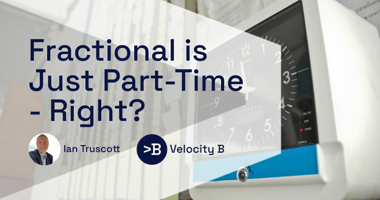Alex touches the contentious third rail of sales, with some advice on compensation plans.

Alex breaks down the numbers game that is critical to high-performing sales teams.
Clichéd but true - sales is a numbers game. It doesn’t make sales sound exciting or innovative; it doesn’t make salespeople feel important or smart. But it doesn’t make the statement any less true - the numbers need to add up.
When it comes to generating new business, the majority of top-performing salespeople are also the most active.
Numerous "sales toys" and tools are available to help salespeople identify the most qualified and likely-to-buy prospects. Although I support the use of technology, data, analytics, and automation to help determine which prospects to pursue, we cannot overlook the fact that the more prospects we encounter who fit our ideal customer profile (ICP), the more opportunities we will find. Let's not forget that not everyone is a prospect – the first key step in the new business process is knowing who to get in front of.
Every company and salesperson should be well-versed in sales maths and how it applies to the development of a possible deal as it moves through the sales stages and process. Over time, we should (will) have collected a robust sample of data that allows us to understand how much activity it takes at the top of the sales funnel to close a deal.
Setting the Stage
Let's map out the traditional sales stages using a generic company:
- Prospect Targete
- Initial Conversation and Qualification
- First Meeting
- Prospect Needs Identified; Solution Fit Established; Agreement to Move Forward
- Second Meeting / Deep Dive Discovery
- Presentation / Proposal Delivered
- Deal Closed & Won
Admittedly somewhat simplistic, but every business will have something similar to these stages, and this is where the math numbers come into play – so we can work backward from a closed deal to determine how much new business activity is required to make a sale.
Acknowledging that every opportunity is different and each deal will have its own likelihood to close, to bring this to life, let's use some standard metrics that I have seen consistently through my career and are considered pretty much the standard for B2B tech.
- We win one out of three opportunities that reach the Proposal Delivered stage.
- When we identify that there is a need, requirement, and solution fit, three out of four prospects consent to proceed to the proposal stage
- Two-thirds of the prospects we meet with in the first meeting proceed to the next phase.
- Fifty percent of the target prospects we engage with (and are qualified) agree to a first meeting.
Delivering the Performance
Let’s imagine, in our example, that having calculated the average deal size, we can roughly estimate that in order to meet their target, the salesperson needs to close 12 deals in a specific timeframe.
To achieve this, we can map out the activity needed:
- 12 won deals need 36 proposals (we win one in three)
- 36 proposals require 48 opportunities reaching sales stages 4 & 5 (3 out of 4 move to proposal stage)
- 48 prospects with needs identified require 72 initial meetings (two-thirds of first meetings, stage 3, move to the next stage)
- 72 first meetings need 144 initial conversations (50 percent of stage 2 turn into first meetings)
We know that every business, market, and deal is different, and it is easy to poke holes in this generic example, but the fact remains that to work the sales funnel and win business, we need to do x to achieve y – the numbers don’t lie.
And this is not just the domain of management; be it the Founder, Chief Revenue Officer, Sales Director, every salesperson should be taking responsibility for owning their metrics and numbers.
‘The most valuable math you can learn is how to calculate the future cost of your current decisions.’ - Anonymous

Our Managing Partner, Alex, is a seasoned sales leader with over 20 years of experience, driving SaaS and data-led revenue growth strategies.
You can follow Alex Simonson on LinkedIn





